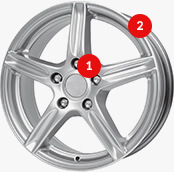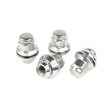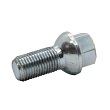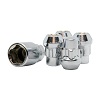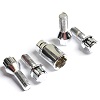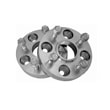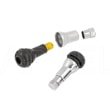Better tires, less fuel consumption?
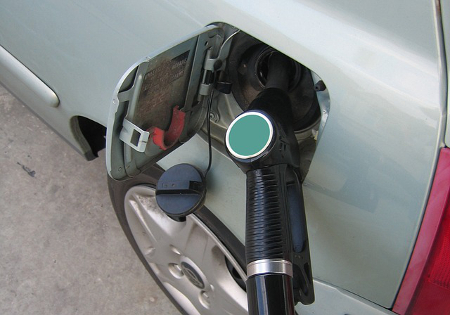
After a drastic drop, fuel prices have been rising slightly, but still, for some time. Will they reach the values known from before October last year, when they exceeded the barrier of the magic five zlotys. Let's hope that doesn't happen. This does not mean, however, that it is not worth looking for ways to reduce fuel consumption, and thus save a few pennies a week, or even a few zlotys a month. Not everyone is aware that since November 2012 the European Union has decided to help us save fuel costs by ordering tire manufacturers to label their products with labels describing, among other things, rolling resistance, which has a direct impact on fuel consumption.
Probably everyone knows the characteristic stickers on refrigerators, describing their energy class. Starting with A, going through successive letters of the alphabet, ending with G, they meant the most economical, less economical and least economical devices. Guided by them, consumers could compare products and choose the right models. The rubber tire labeling system works in a similar way. They have a standardized marking regarding wet grip, noise level and, above all, rolling resistance , which has the greatest impact on financial savings.
What determines higher fuel consumption?
Several rolling resistance, inertia, gravitational, aerodynamic and friction forces act on a moving car. Their size determines the amount of fuel needed to give the vehicle enough energy to cover the next kilometers. As you can easily conclude, among all parts of the vehicle's construction, tires have the greatest impact on its combustion. How much we spend on fuel depends on their quality, and above all on the tread used. Tire manufacturers go to great lengths to invent new thicknesses and arrangement of grooves to provide their products with the best aerodynamic properties, and thus reduce rolling resistance.
Less rolling resistance = more fuel savings
Now that we know that rolling resistance has a real impact on car fuel savings, it would be advisable to identify tires that will take care of this condition. Which products will ensure the least energy loss during rolling and deformation? Which will be the optimal choice? The EU labels , which have been present on new tires since November 2012, help to answer these questions.
As in the case of household appliances, which have had a clearly defined energy class for several years, in the case of tires we will meet with a letter designation from A to G (in the case of passenger cars, class D is omitted), where A means the construction of tires ensuring the lowest rolling resistance , and G the lowest economy class, i.e. high fuel consumption.
How to save up to PLN 1,200 on fuel?
How does the above labeling translate into real savings? To illustrate, we will present a real-life example. The average Kowalski covers about 10,000 kilometers per year by car to work or shopping with his wife. With an average fuel consumption of 8 liters per 100 km and a price per liter of fuel of PLN 5, with A-class tires it will save about PLN 300 per year, the difference between a set of top-class tires and the lowest-class tires is as much as 7.5 percent. With an average tire life of four years, the purchase of A-class rolling resistance tires can mean savings of PLN 1,200 in total. As you can see, this is a game worth the candle.
Which tires to choose?
It is certain that if you want to save on fuel costs, you should choose those with the best rolling resistance class, i.e. A. The price and wear rate of the tire itself should also be taken into account. For example, Kumho tires with a very attractive price are almost as durable as the more expensive Michelin tires. Popular Continental tires are not cheap, they wear very quickly, which makes their operation extremely expensive.

